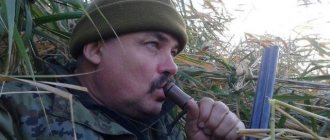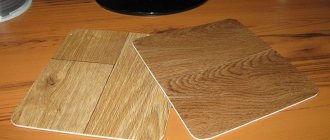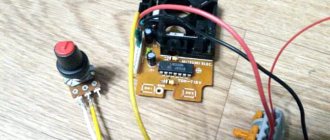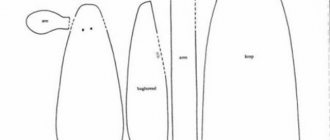- September 25, 2018
- Hunting
- Natali Michaelis
Hunting with a decoy for a fox is a rather exciting type of hunting, because in order to catch this unusually beautiful animal you will need to bring it closer to you at a distance of 30 to 40 meters. This event does not require any special equipment or organization from a person. In most cases, the fox is hunted alone. You should also remember that this is a very cautious and sensitive animal.
A little about hunting
Beginning hunters are advised to take care of good camouflage, since this animal is able to recognize an approaching person even from a hundred meters away. You will need to purchase a camouflage robe, as well as a special cover for the hat. In our country, fox hunting is most common in winter, so all equipment should be made in white. It is recommended that even felt boots and gloves blend in with the snow, since the fox has very good eyesight, and in an all-white uniform you will be almost invisible.
It is also necessary to purchase high-quality natural decoy. Professional hunters quite skillfully imitate a mouse squeak with their lips, but beginners will have to buy a special whistle in the store. You can even learn to imitate the cry of a wounded hare, but this will require quite a lot of time.
The sounds produced by the decoy are quite reminiscent of those made by wild animals. The fox will definitely take the bait, after which catching it will not be difficult.
Fox hunting with a wounded hare decoy
Most professional hunters recommend using this particular bait. Fox hunting with a hare decoy is best done at dusk in early spring. The fox will respond most actively to the call between 16:00 and 21:00. In general, this method is practically no different from using a decoy with a mouse squeak, which will be discussed a little later.
Thanks to its acute hearing, a fox is able to hear the cry of an animal even in windless frosty weather at a distance of up to one kilometer. When luring an animal, it is necessary to alternate long and short sounds every 15-20 seconds. After several attempts, you should take a short break and wait about 3-4 minutes, and then get down to business again.
The fox decoy must be covered and opened with one hand. Hunting at dusk is otherwise called “hunting from ambush.” It is worth arriving at the chosen place in advance, even before dusk. It must have a good viewing angle, as well as natural cover. We wait for the time when the fox begins to actively look for prey, and we begin to lure the animal.
The best shelter would be a haystack in an open field, which rises quite high above the surrounding terrain. Remember that it is necessary to position yourself on the leeward side, otherwise the fox can smell the human scent.
How to make a decoy with your own hands?
The simplest bait is one that imitates the squeak of a country mouse. It can be made from an ordinary glass test tube. The vessel is filled with vodka or an alcohol solution, after which the neck is closed. To achieve the desired sound, the cork is moistened with vodka and quickly passed through the glass.
To make “Hare Cry” semolina, take a wooden tube and make a longitudinal cut in it. A thin sheet of metal is inserted there. If you blow into the tube, the metal will begin to vibrate, imitating the cry of a hare.
Also the hare's cry is made from duck rump. To do this, you just need to disconnect the mouthpiece from it.
It's also a good idea to use two wooden plates. They should be exactly the same. A groove 2 mm wide is cut in each. 2 holes are drilled in the plate and a rubber strip is inserted. Subsequently, both plates are compressed.
Fox hunting with decoy wounded hare
When hunting a fox with bait or a wounded hare, several important points must be taken into account:
- The hunt must be carried out behind some kind of cover, such cover could be a haystack or dense bushes.
- You need to take into account the direction of the wind, it should be from the fox to you.
- It is necessary to follow the rules of camouflage, maintain silence, and not make sudden movements.
- The best time for fox hunting with a fox call is the hare call, this is the end of winter, from 16:00 to 21:00, the time of maximum fox hunting activity.
- When luring a fox, you need to make the hare scream for 15-20 seconds, constantly covering or opening the hole in the bait with your hand, then stop for 3-4 minutes.
- When hunting a fox by baiting the cry of a hare, you need to be careful and careful; baiting a fox, the cry of a wounded hare can attract not only the fox, but also other predators, including wolves, bears, and lynx.
Fox bait. The cry of a wounded hare is not difficult to master; no special skills are required to use it. Just practice using this lure before hunting indoors to learn how to realistically imitate this sound.
If you want to learn how to hunt a fox with bait perfectly, it will take a lot of time and a lot of desire, but it is worth it, hunting a fox with bait is extremely exciting and interesting.
Manufacturing instructions
The simplest bait is one that imitates the squeak of a country mouse. It can be made from an ordinary glass test tube. The vessel is filled with vodka or an alcohol solution, after which the neck is closed. To achieve the desired sound, the cork is moistened with vodka and quickly passed through the glass. This is how a mouse squeaks.
To make “Hare Cry” semolina, take a wooden tube and make a longitudinal cut in it. A thin sheet of metal is inserted there. If you blow into the tube, the metal will begin to vibrate, imitating the cry of a hare.
Also the hare's cry is made from duck rump. To do this, you just need to disconnect the mouthpiece from it.
It's also a good idea to use two wooden plates. They should be exactly the same. A groove 2 mm wide is cut in each. 2 holes are drilled in the plate and a rubber strip is inserted. Subsequently, both plates are compressed.
Hunter's gun and equipment when hunting fox with decoy
Foxes do not have sharp eyesight, so they cannot replace a well-camouflaged hunter, but a fox will instantly react to movement. If a predator senses danger, it will immediately run away from this place and never return here again. Fox hunting with bait forces the hunter to hide and disguise himself in the best possible way. Clothing for fox hunting should be comfortable and warm.
To observe a fox, you must have hunting binoculars and a flashlight with you.
The gun can be disguised with special tape. For decoy hunting, a 12-gauge shotgun is ideal because it has a sharp, full action. It is better to use fraction #0 or #00
When hunting foxes, many hunters load the cartridges themselves, sprinkling the shot in the cartridge with starch or talcum powder to increase accuracy, because when hunting a fox, they will have to shoot with bait in frosty weather and at a long distance.
You can use a rifled firearm when hunting fox with bait unless it is prohibited by hunting regulations in your area. For fox hunting, rifled firearms chambered for 223Rem or 308Win are best suited.
Mouse squeak decoy
For this type of hunting, clear but windless weather is best. Arriving in an open field, where foxes usually hunt mice, the hunter must look around with binoculars and find the animal. Having noticed a mousing fox in the distance, you should quickly hide. For an ambush, it is best to use natural depressions, such as a ravine and depressions. Any abandoned lake or spring ravine is also suitable.
Your shelter must comply with the following conditions:
- There should be no bushes or tall vegetation in front of it. The hunter's view should not be obstructed by foreign objects.
- The ambush should be located against the wind (relative to the animal).
- From a shelter that is too large, the sound of a decoy can be heard quite poorly, so choose a ravine of a suitable size.
- The fox should be at a distance of at least 800-900 meters, but no closer than 600 steps.
If you use the above recommendations when choosing a shelter, and also purchase good camouflage, the animal will never notice you.
As soon as the hunter decides on a place for an ambush, he must begin to carefully move towards it. You need to lie down in the shelter in such a way that only the white cap peeks out, rising above the surface. As soon as you are comfortable, prepare your gun for a shot in advance and begin to lure the fox.
Homemade decoys for hazel grouse, design and production.
A hazel grouse decoy can be made from a regular disposable syringe. For a decoy with a higher timbre, a smaller syringe is needed, and vice versa. The part of the syringe where the needle is soldered needs to be cut off. What remains is a tube about 65 mm long with stops protruding from one side. In these stops you need to make holes for the nylon cord.
Then insert an empty polyethylene rod from a gel pen inside the tube (it fits perfectly) and use an oval or round needle file to cut out a hole approximately 20 mm from the edge. The rod from the handle is inserted into the tube so that when the hole is sharpened with a needle file, its internal cut is smooth and sharp, without burrs. Burrs worsen the sound of the call; they must be removed in any way.
Then a rod with a piston should be inserted into the tube and pushed to the middle of the hole. Part of the excess rod is cut off approximately 20 mm from the edge of the tube. On the opposite side, plasticine is filled into the tube up to the piston. Now part of the plasticine needs to be removed, and the plasticine threshold should be reduced to nothing to the edge of the tube. Such a threshold will more accurately direct a stream of air to the sharp edge of the hole and cause sound.
The pitch of the sound is adjusted by moving the piston behind the rod inside the tube. The good thing about this decoy is that by moving the piston, you can achieve the ideal sound and select the desired tone for both the male’s whistle and the female’s whistle. The decoy is transparent, every speck of dirt is visible in it, and at the same time it is easy to clean - just remove the rod with the piston and shake the decoy. Remove excess plasticine and level the threshold well with a syringe needle, the end of which must be flattened and, using a needle file, given the shape of a shoulder blade.
Using decoy
The keen hearing of this animal will allow you to hear the squeak of a mouse or the cry of a hare at a fairly large distance. It is also worth noting that it is not for nothing that the fox is popularly called a cunning animal. It is able to quickly recognize deception. Therefore, sounds must be produced in several stages. For example, it is worth making two short sounds and one slightly longer: “pik-pik...pik.” It will be enough to emit it once, and then look at the fox’s reaction through binoculars.
Typically, the fox will respond to the sound after the first time. If she was sitting at that moment, then, having heard a mouse squeak, she would definitely turn her head in the direction of the sound, and if she was walking, she would stop in place, listening to the environment. Only if the animal ignores the sound, it is necessary to repeat the luring a minute after the first attempt. Typically, a fox will immediately head towards the source of the sound after hearing it.
Setting the sound of a duck call.
To give the sound the tone necessary for a teal decoy (reminiscent of the voice of a teal duck), you should lengthen or shorten the free end of the groove and tongue, that is, push the bullet casing into the coil more or less deeply, change the thickness of the tongue or slightly bend its free end up . The thickness of the tongue plate can be changed using sandpaper or concentrated nitric acid (lowered for a few seconds). In the latter case, be sure to rinse the plate with water.
Setting up the decoy and achieving the desired sound is the most painstaking part of the work. When the squeaker begins to make the necessary sounds, it is fixed in a horn, which can be a brass sleeve of 12-16 mm caliber without a bottom, as well as any other metal or plastic tube or socket.
On the other side, they put on a mouthpiece, which can be made from a brass sleeve, but one caliber larger. This sleeve is not cut, but only the socket for the primer is drilled out. The final adjustment of the decoy, as well as mastering the ability to imitate the voice of a teal duck with its help, is possible only in the wild. Hearing the voices of living birds, it is much easier to choose the desired tone and character of the sound.
How to wait for the fox
It is worth correctly recognizing the moment when it is no longer necessary to lure the animal. At too close a distance from the fox, the animal recognizes an unnatural squeak much easier. Most wild animals are able to recognize the location where a sound came from with phenomenal accuracy. Therefore, be sure that the fox will sooner or later come close to your ambush.
Along the way, the fox may be distracted by real mice, but he will never forget about your bait. However, if this does happen, repeat the sounds made and the animal will again head in your direction. As soon as the animal turns its head towards your ambush, you should freeze without making a sound. Remember that your disguise will not allow the fox to see you against the background of white snow, but a moving object is much easier to notice.
A little trick
Some hunters prefer to throw a ball of black sheep's wool in front of them when the animal approaches their shelter. It must be tied to a white thread or fishing line in advance. Others prefer to use a dead frozen mouse for this game. By pulling the object by the line, you will imitate the movement of a mouse, while the black color will stand out wonderfully against the white snow, so that the fox will quickly notice the bait. Succumbing to the excitement of the hunt, the animal will cautiously pounce on the fleeing prey. This moment is best suited for a successful shot.
Weapons for hunting
Have you thought about what weapon to use for fox hunting? For this activity, a double-barreled shotgun with large shot - from No. 1 to No. 3 - is best suited. The suitable range for firing such cartridges is from 35 to 60 meters.
If the hunter has at his disposal a fairly obedient hunting dog, the color of which is light or white, then you can take the four-legged assistant with you on the hunt. The dog will be indispensable for catching a wounded animal that decides to run away from the hunter.
Useful and relevant tips
Fox hunting using bait is very effective, exciting and emotional. Many hunters consider this type of hunting to be the best of all. Fox hunting with bait is done alone and requires the hunter to have high skills in both following the animal and shooting. Try this type of hunting and rest assured that it will not let you down.
Sources
- https://truehunter.ru/416784a-ohota-s-mankom-na-lisu-sekretyi-udachnoy-ohotyi
- https://piko-train.ru/devajsy/manok-na-lisu-pisk-myshi.html
- https://ohota360.ru/manok-na-lisu-svoimi-rukami.html
- https://albatros-tmn.ru/snaryazhenie/kak-sdelat-manok-na-lisu-samostoyatelno-svoimi-rukami
- https://huntland.ru/index.php/2017/05/19/ohota_na_lisicu_s-_mankom/
- https://FishermanBlog.ru/manok-na-lisu-svoimi-rukami.html
Alternative option
Using hardwood, you can cut a couple of plates (5 centimeters long, 1 centimeter wide and 0.5 centimeters thick). They need to be driven to each other as accurately as possible so that they are in close contact with each other. In the middle of each plate, several hollows are cut across (depth from 0.5 millimeters and width 3 millimeters). It is very important to ensure that the valley plates coincide with each other.
A pair of holes are drilled in one plate. It is necessary to cut a strip 2 millimeters wide from thin wood. One end is inserted into the hole in the plate on the side where the groove was previously cut. After this, all that remains is to clamp the end with a wooden wedge. The second part of the strip is pulled tightly into the remaining hole. The volume of the sound produced by the decoy will depend on how tightly the elastic band is stretched. The plates are folded together and tied with a strong thread. This decoy is designed to imitate the squeak of a mouse.
Homemade duck decoys, design and production.
Some hunters are very good at imitating the voices of wild ducks and luring them in without a decoy. Simply with the help of your lips and a cupped palm. It is quite difficult to learn this, so it is better to use special decoys that you can easily make yourself. If you have at least some ear for music, every hunter can learn to use them.
The teal decoy consists of a horn, a peep and a mouthpiece; the squeaker, in turn, is made up of a wedge, a tongue and a groove. The simplest teal decoy is made as follows. A jacketed bullet of 7-8 mm caliber is ground off from the side to about 1/4 of the thickness, the lead is melted out and the remaining jacket is cleaned inside with sandpaper. A tongue of such size is cut out of a thin brass plate (0.1-0.2 mm) that when applied to the shell, it completely covers its sawn-off part.
The shell with a tongue placed on top is tightly inserted into the half of a regular spool of thread (with the open end inside the spool) to a depth of 5-6 mm and secured in it with a specially cut wooden wedge. The wedge should be half the length of the bullet shell (groove), and the thickness and cross-sectional shape should be sufficient to securely hold the groove in the reel, press the tongue tightly against it and completely cover the part of the reel hole remaining above the groove and tongue.
The end of the groove and the tongue covering it protruding from the coil should be 7-10 mm free from the wedge. The resulting squeak must be taken into the lips so that the free ends of the tongue and groove are in the mouth, and blow into it. Air passing through the groove vibrates the tongue plate.
Hare call decoy
The decoy, which reproduces the cry of a hare, is a fairly thin tube, which is divided in the middle by a longitudinal section. This section is covered with two metal plates, which are connected to each other using copper wire. When a hunter blows into such a mouthpiece, the air will lift the copper plate, causing it to vibrate violently. After this, the illusion of the cry of a wounded hare appears. Making such a device is not difficult even for a novice hunter.
Popular decoys
Are you planning to go fox hunting with a decoy? You can purchase this device at any store specializing in hunting equipment. You don't have to pay much for a simple decoy that imitates the squeak of a mouse. However, there are also more sophisticated models, for example made in Sweden, which have a wide spectrum of action. What can we say about electric decoys, which are capable of imitating several hundred sounds of various animals. Such equipment will not be cheap, but it has a wide range of actions.
We hope our article helped you understand all the intricacies of hunting with a fox decoy. Even a novice hunter will be able to cope with this interesting activity if he follows all the above recommendations. The main goal of a person when hunting an animal is to remain unnoticed until it comes to a distance suitable for shooting. In this regard, it is recommended to pay special attention to camouflage, as well as choosing the right place for an ambush. As soon as the animal comes within shooting range, grab the gun and do what you were taught at the shooting range. The main thing is not to panic and not to give your presence away to the sly fox.











